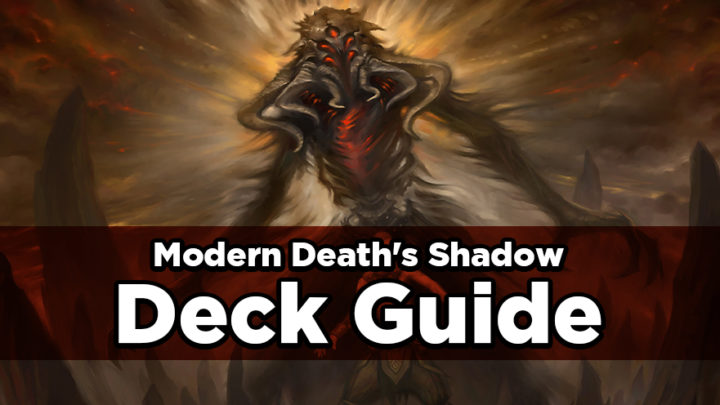Last weekend, Star City Games held the first major in-person Magic tournament since the start of the pandemic. Corey Baumeister took home the trophy, and his weapon of choice for the Modern portion was Grixis Death’s Shadow. As many of you already may know, Grixis Death’s Shadow is my all-time favorite Modern deck, and I’m thrilled to have an opportunity to update my deck guide. Let’s dive right in!
What is Grixis Death’s Shadow?
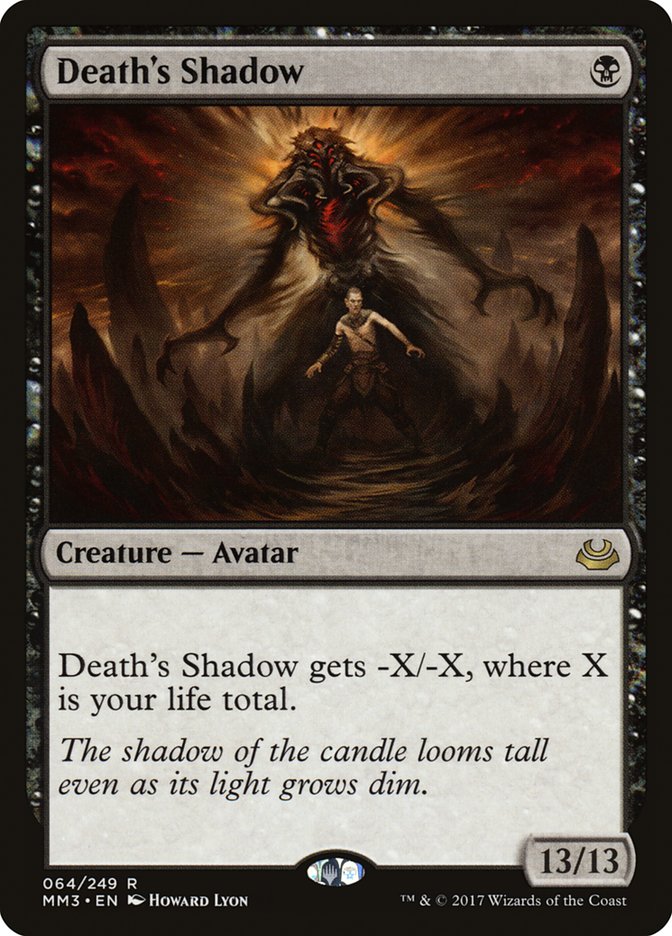
Grixis Death’s Shadow is fundamentally a tempo deck. These decks use powerful, cheap threats and interaction to keep the opponent off balance just long enough to take over the game. Grixis Shadow shines because it has a unique blend of counterspells, discard spells, removal, and threats. It’s not quite aggressive enough to kill the opponent without disruption, so both parts of the deck work in harmony to create a cohesive plan.
What sets Grixis Death’s Shadow apart is that it directly benefits from taking damage. It can get the most out of shock lands and spells like Thoughtseize because those cards power up Death’s Shadow. Playing the deck is always a balancing act: you want to use your life total as a resource to power your aggression, without getting too reckless with it. Honing this sense will take some time, because a lot of getting it right is gauging your opponent’s damage output. Mastering this concept allows you to turn corners in tight windows, turning games that look like losses into wins!
How Death’s Shadow Changed Since MH2

In June, I put together this update to Grixis Shadow shortly after the release of Modern Horizons 2. This deck was an evolution of the Rakdos and Mardu Death’s Shadow decks that were popular during the spring. But this version of Death’s Shadow would prove unable to handle the rise of Elementals shortly thereafter.
One of the biggest points in Death’s Shadow’s favor is that it can adapt to the metagame, and that’s exactly what it did in recent months. Players started running Dress Down as a way to handle the powerful Elementals. But Dress Down wasn’t just a clean swap for Temur Battle Rage. Dress Down prevented the deck from playing Scourge of the Skyclaves, which dies to state based effects when Dress Down is in play. Fortunately, Kroxa, Titan of Death’s Hunger happens to play well with Dress Down, and it’s proven to be a more-than-suitable replacement. These changes shifted Grixis Shadow into a slightly slower role, which meant it could start leaning on cards like Expressive Iteration and Drown in the Loch.
The Decklist
Corey built his deck to target a slower metagame, and I agree with a lot of his choices. Lightning Bolt gets worse if the metagame is shifting away from small creatures in favor of bigger, value-oriented decks. Dress Down in particular does a great job at shutting off opposing Solitudes, which can be disastrous. Kroxa is another card you can play in higher numbers to help fight the value-centric decks.
All in all, my list is similar, with some changes to bolster slightly different match-ups.
Core cards
4 Death’s Shadow, 4 Ragavan, Nimble Pilferer, 4 Dragon’s Rage Channeler
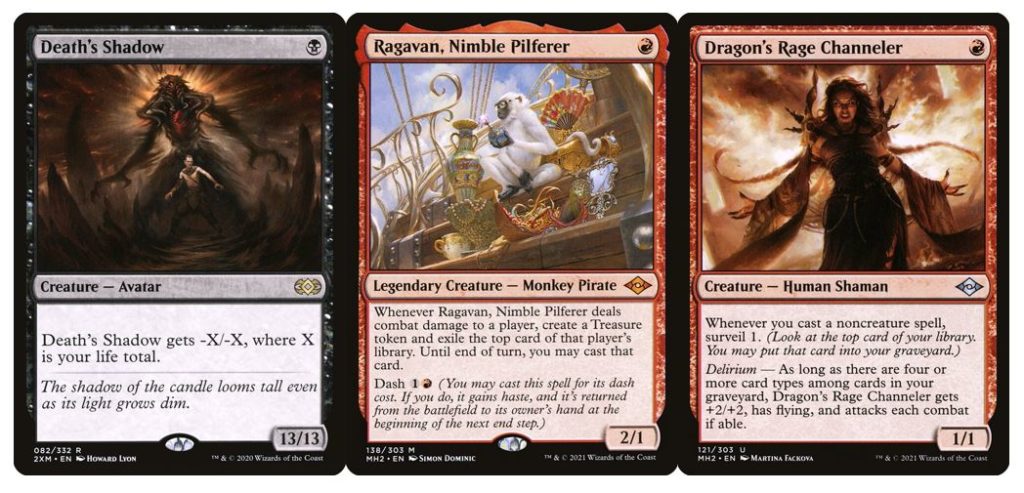
These make up the primary threat package. Ragavan and Dragon’s Rage Channeler need no introduction at this point; they’re among the best creatures you can play in any red tempo shell. Given the low average mana value of this deck, the Treasure tokens from Ragavan will often allow you to cast multiple spells per turn much sooner than your opponents. You’ll rarely cast your opponent’s spells with Ragavan, but having access to free cards some of the time from a one-mana creature is above rate.
Dragon’s Rage Channeler is both a threat and a source of card selection. A one-mana 3/3 flyer that increases the average quality of your draws is certainly too good to pass up in a tempo shell.
Death’s Shadow, the namesake card, is the epitome of a risk/reward strategy. Turning the downsides of Thoughtseize, fetch lands, and shock lands into damage is a dangerous game, but powerful if done correctly. You’ll struggle to get faster closing speed out of a one-mana spell.
2 Kroxa, Titan of Death’s Hunger
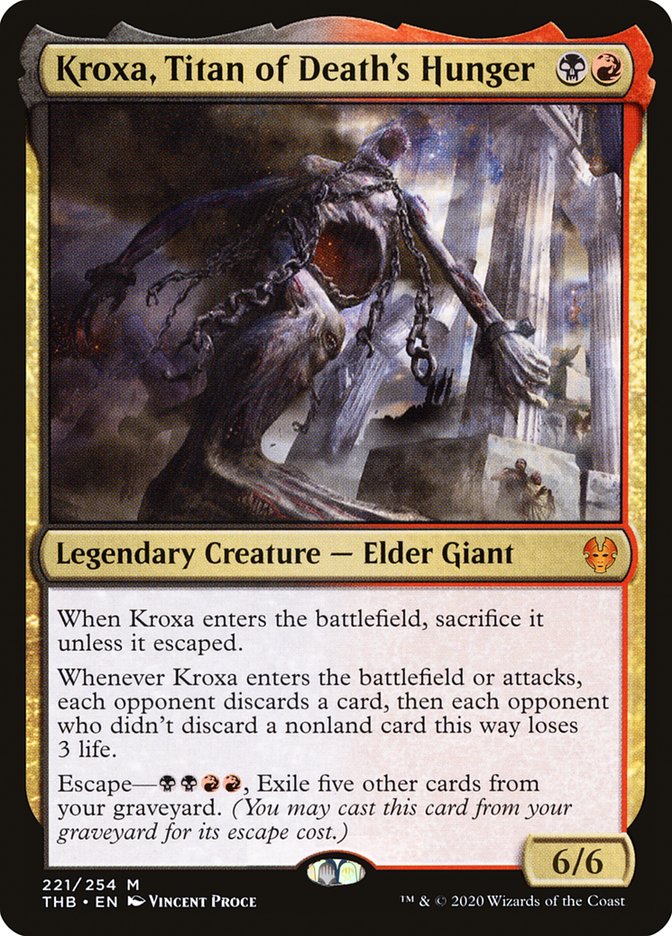
Kroxa, Titan of Death’s Hunger is a backup threat that plays well with Dress Down, as well as a resilient win condition against removal-heavy decks. I’d play at least two copies in the Dress Down version of the deck to make sure you’re keeping the threat density high enough.
4 Thoughtseize, 2 Inquisition of Kozilek
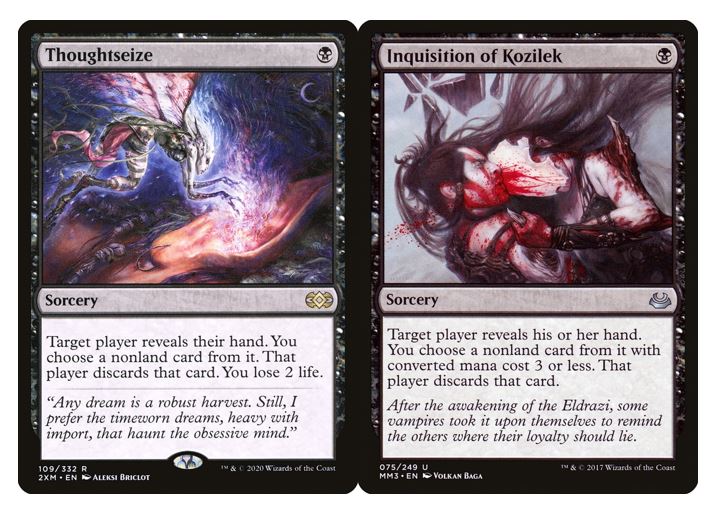
Six discard spells is the floor for Grixis Death’s Shadow. Often, it’s best to play a discard spell on turn one to both clear the way for a creature on turn two, and to have a better idea how to plan out your future turns. The split has four copies of Thoughtseize because it doesn’t have any restrictions, and it helps enable Death’s Shadow.
4 Mishra’s Bauble
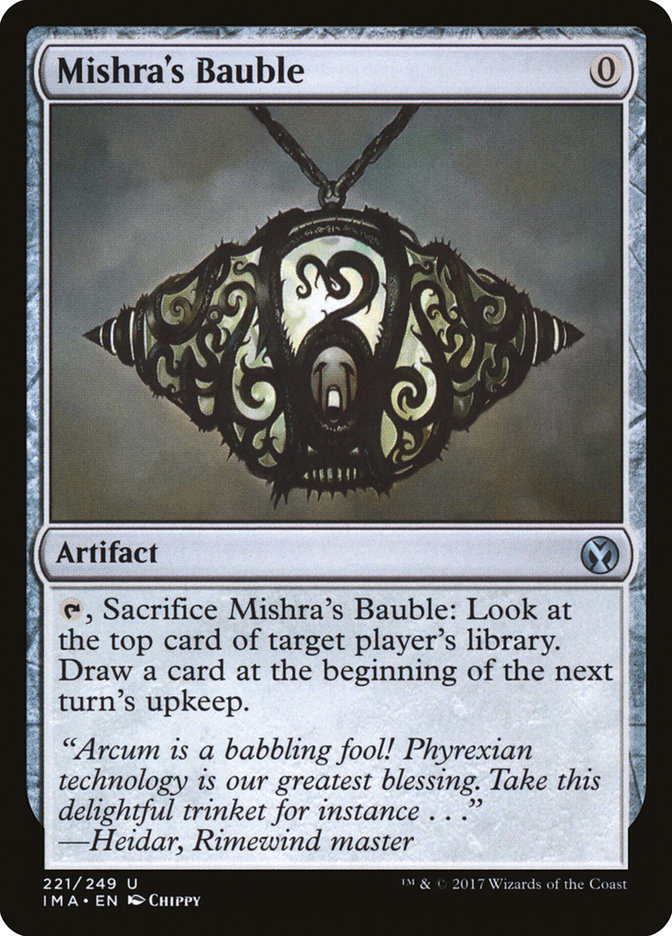
Mishra’s Bauble has been a mainstay in Death’s Shadow decks for years. Gone are the days of powering out Gurmag Anglers, but helping Dragon’s Rage Channeler get delirium and creating a card draw engine with Lurrus is enough to keep it around.
4 Expressive Iteration
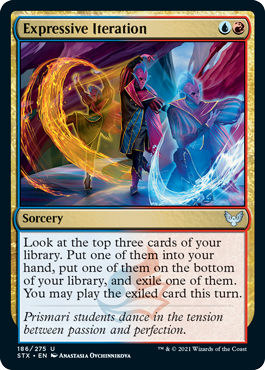
Expressive Iteration is perhaps the most powerful draw spell Modern has seen in a while. Grixis Shadow has a low enough mana curve that Expressive Iteration basically reads: “Look at the top three cards of your library and draw two of them.” Once the first few turns go by, and you’re looking to bridge into the mid-game, there are few cards that do it as well as Expressive Iteration.
3 Drown in the Loch
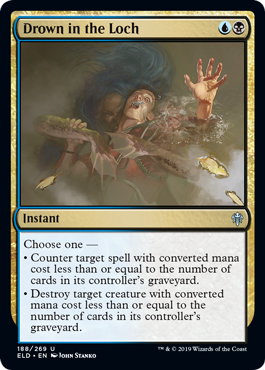
Drown in the Loch is incredibly flexible, especially when Modern is as fast as it is. Right now, almost all the interactive spells are between one and three mana, and this card is trivially easy to enable in a format with fetch lands. Even if your opponent isn’t fetching early in the game, Thoughtseize, Inquisition of Kozilek, and Kroxa will put cards into their graveyard.
In the past, I’ve referred to Drown in the Loch as a modal Counterspell/Terminate, and I stand by that. The issue with Terminate is that it can’t interact on the stack, and Counterspell can’t deal with creatures in play. Drown in the Loch is an elegant solution to both of those problems, so it earns a home in Grixis Death’s Shadow.
2 Dress Down

Dress Down has completely reshaped the look of Grixis Death’s Shadow, turning it from an aggressive, tempo-based deck to a much slower, midrange-leaning one. Current versions of Grixis Shadow focus more on outmaneuvering the opponent with flexible cards than all-out aggression like the old Temur Battle Rage versions.
Dress Down solves one problem that Temur Battle Rage always had: unless you were killing the opponent, it was likely blank cardboard. While the damage ceiling isn’t quite as high as Temur Battle Rage, Dress Down has an incredible amount of utility.
Dress Down outright kills Construct tokens and Scourge of the Skyclaves. It makes Tarmogoyf an 0/1 and shuts off delirium on Dragon’s Rage Channeler. It cheats Kroxa into play, removes protection from Auriok Champion and Sanctifier en-Vec, and turns off enter the battlefield triggers. If you can’t find anything else to do with Dress Down, you can always cycle it and put an enchantment in the graveyard for delirium.
Flex spots
The core of Grixis Death’s Shadow is fairly stock at this point, with 51 of 60 cards being spoken for. This leaves nine flex slots that allow the deck to be configured to the adapting metagame.
1 Dress Down

The extra Dress Down is largely to reinforce the match-ups against decks with Solitude, or Urza’s Saga. Kroxa‘s usefulness is trending upward, so having the “combo” more often is nice.
4 Unholy Heat

Unholy Heat is my removal spell of choice for the moment. Fatal Push and Lightning Bolt both have their merits, but as the creatures in Modern get larger, Unholy Heat gets better. Delirium isn’t much of a concern for Grixis Death’s Shadow, which makes Unholy Heat look like a one-mana Hero’s Downfall. The downside of Unholy Heat compared to Lightning Bolt is that it can’t kill your opponent, but I’m not particularly worried about that right now. In midrange mirrors, Lightning Bolt often gets trimmed after game one in favor of more applicable removal spells, because those games rarely end with someone dying to Lightning Bolt. Moving to four copies of Unholy Heat instead of Lightning Bolt means that we’re almost pre-boarded against the larger creature decks.
1 Drown in the Loch

The fourth Drown in the Loch makes the cut because a lot of Modern is still operating on low mana curves. Drown in the Loch shines against any Lurrus deck, Mill, Azorius Control, Izzet Murktide, Crashing Footfalls, Living End, and many more.
1 Inquisition of Kozilek

While two copies of Inquisition of Kozilek are usually the floor for Death’s Shadow, I tend to prefer more. Seven total discard spells feels like the right amount to knock my opponent off their game plan without flooding on discard spells. In more combo-heavy metagames, I would play the full four copies, but for now, I’ve been finding success with three.
1 Scalding Tarn
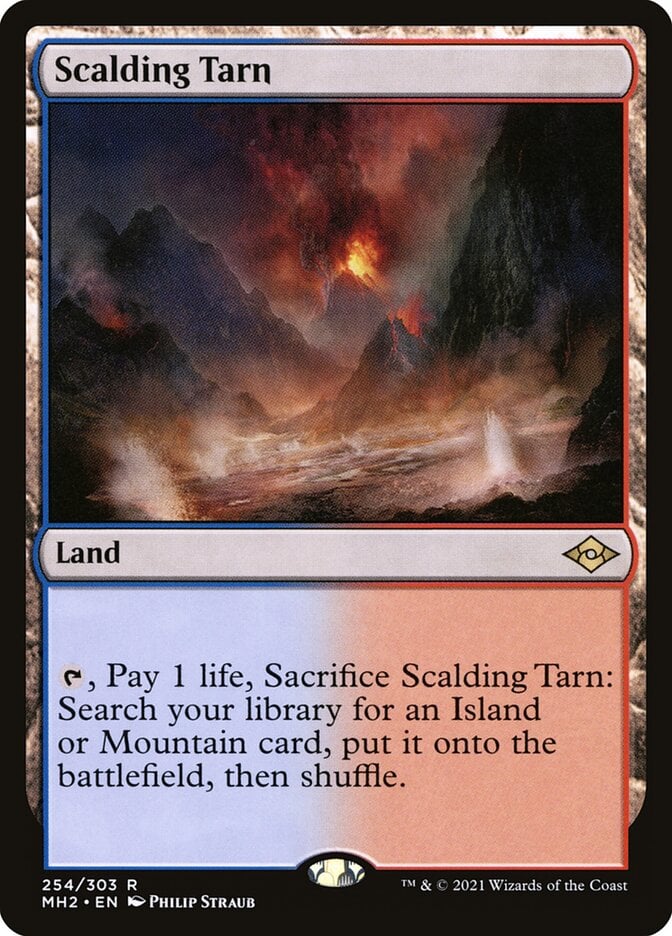
Depending on the era, Grixis Shadow has played anywhere from 17-19 lands. I have been playing 18 for a few months, but as the mana curve of the deck rises to accommodate more two-mana spells, the deck has started to need a 19th land. Thanks to Lurrus, Grixis Shadow has some built-in flood insurance, and Kroxa also does a great job of letting you use extra mana.
1 Kolaghan’s Command

Kolaghan’s Command floats in and out of my main deck. I do like having access to one in the starting 60 right now because Azorius Control and a couple other decks have Chalice of the Void in game one. Kolaghan’s Command is also one of the best cards against Hammer Time and other Urza’s Saga decks. If you’re looking to slim down the curve a bit, Kolaghan’s Command could become Fatal Push, but I’d make sure to fit Command in the sideboard, in that case.
Grixis Death’s Shadow or Izzet Murktide?

Earlier this year, I declared Izzet Murktide the new Grixis Death Shadow — and it was for a while. But Solitude’s popularity is skyrocketing over the last few weeks, which is bad news for Izzet Murktide. While Izzet Murktide does have some tools to deal with Solitude, life gets hard if one manages to exile a Murktide Regent. Against either Azorius Control or any of the Elementals variants, Ragavan and Dragon’s Rage Channeler are going to have a tough time finishing the game by themselves. Death’s Shadow doesn’t enjoy seeing Solitude, but with seven discard spells, four Drown in the Loch, and three Dress Down, Grixis Shadow has more ways to prevent Solitude from being a game winner. Kroxa can also finish the game, should a Solitude take out a Death’s Shadow.
Hammer Time is usually a tough match-up for Izzet Murktide, but it’s better for Shadow. Kolaghan’s Command, Fatal Push, and Terminate are all excellent options against Hammer Time that Izzet Murktide just doesn’t have access to. Rebuying Engineered Explosives every turn with Lurrus is an end game that Hammer Time struggles greatly to beat.
Crashing Footfalls and Living End are also better match-ups for Death’s Shadow than Izzet Murktide. While both decks have a fast clock and counterspells, Death’s Shadow gets the additional axis of attack that Thoughtseize and Inquisition of Kozilek provide.
Mulligan Decisions and Sample Hands
Due to the nature of how Grixis Death’s Shadow is built, the cards and hands are going to be more flexible, and thus the range of keepable hands is going to be wider than it would be with other decks. However, I do have some guidelines for what you should look for in a quality opening hand.
- 2-4 lands. I will make exceptions to this — for example, a one-land hands that contains Dragon’s Rage Channeler, Mishra’s Bauble, with a high number of other cheap spells is keepable. One-land hands with Ragavan are also good on the play if your opponent is unlikely to kill it on turn one. Four-land hands need to have a particularly strong set of spells, often including Dragon’s Rage Channeler to help avoid drawing any additional lands.
- Have a threat. Having a threat is essential; otherwise the disruption in your hand doesn’t mean much. I will count Kroxa as a threat if I have a Dress Down or a highly interactive hand in a match-up where I know Kroxa is likely to run away with the game.
- Always have a turn one play. This is a tempo deck, and taking turns off (especially early ones) will allow opponents to get too far ahead of you.
- Know which lands you’re going to fetch, and in what order. Correctly sequencing your mana will allow you to efficiently cast your spells in a timely manner.
What Your Opponent’s Companion Tells You
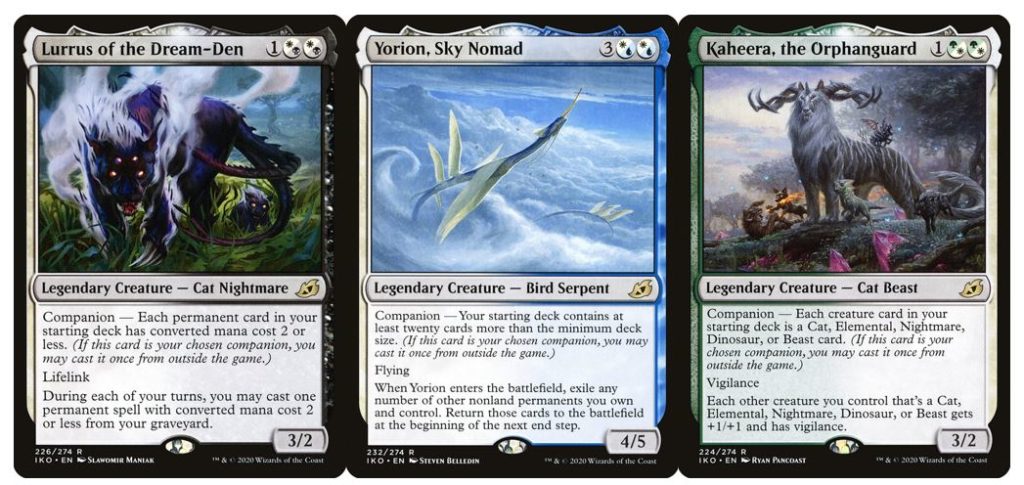
You won’t always know what deck your opponent Is playing before game one, but you can certainly narrow it down based on what companion your opponent shows you. Even a lack of a companion gives away information!
Lurrus of the Dream-Den narrows the field down quite a bit. Jund Saga, Grixis Death’s Shadow, Mill, Hammer Time, and Burn are the most likely decks to have Lurrus as a companion. While these decks have different game plans, there is a commonality: removal spells are likely to be good. Kroxa is also likely to be good against Lurrus decks (except for Hammer Time), so it’s a fairly safe keep.
Yorion, Sky Nomad is likely to be a slower deck looking to generate value, so early creatures and discard spells are welcome. A Yorion deck is most likely either Azorius or Four-Color Blink, Yorion Rhinos, or a Bring to Light deck (either Scapeshift or Niv-Mizzet Reborn).
Kaheera, the Orphanguard only goes in two decks: Elementals and Azorius Control. Either way, be prepared for your opponent to try and drag out the game and bury you in card advantage. Thoughtseize, Ragavan, and Dress Down are all good cards to have in your opening hand.
On the play against Burn
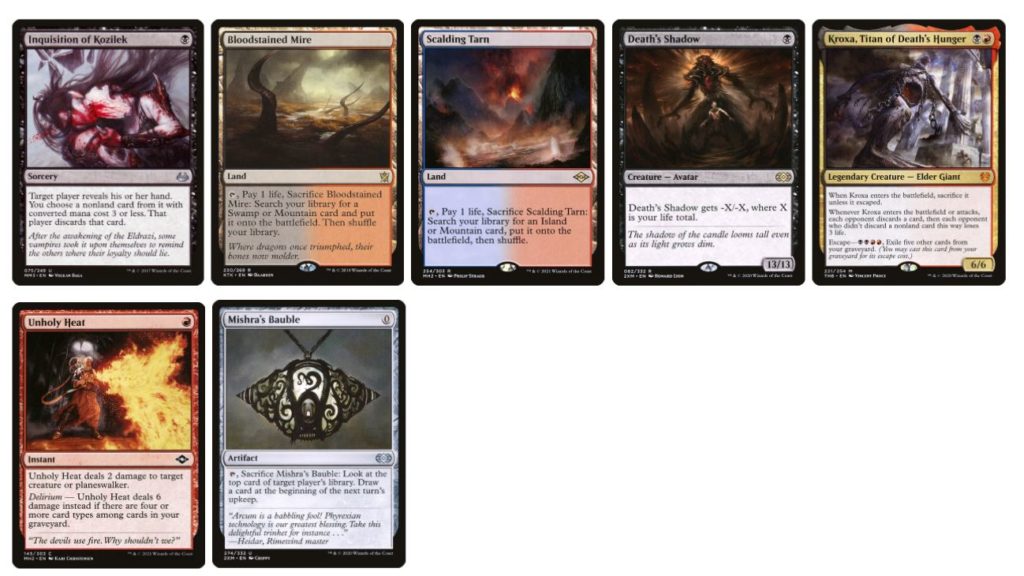
This hand is an easy keep. Two lands is exactly the right amount for this hand. Inquisition of Kozilek is among the best cards in the match-up because it allows you to pressure their hand on turn one without costing any life. Information is important in the Burn match-up because it lets you decide exactly how aggressively you can play. Unholy Heat gives you an answer to an early creature, so I’m not forced to take one with the Inquisition. Mishra’s Bauble lets you build your own Opt with a fetch land to help make sure that you don’t flood out. Kroxa provides inevitability, because once it’s in play, the Burn player likely doesn’t have more than two turns to finish the game. Because the rest of this hand is good at attacking the opponent’s hand, they’ll probably have to start using their spells proactively, which will turn on Death’s Shadow to really turn up the heat.
On the draw against Crashing Footfalls
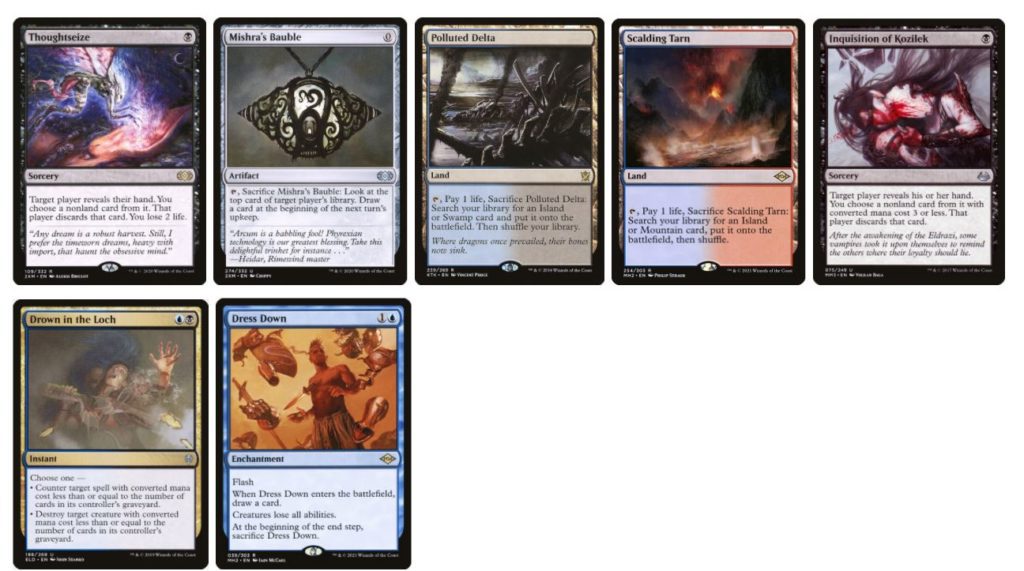
This hand has two lands, a Bauble to help filter upcoming draws, and a couple pieces of disruption. However, it is missing a critical piece in the combo matchup: a threat to actually win the game. Without an early creature, this hand is bound to flounder and likely lose if the opponent finds a redundant copy of a cascade card.
On the play against Azorius Control
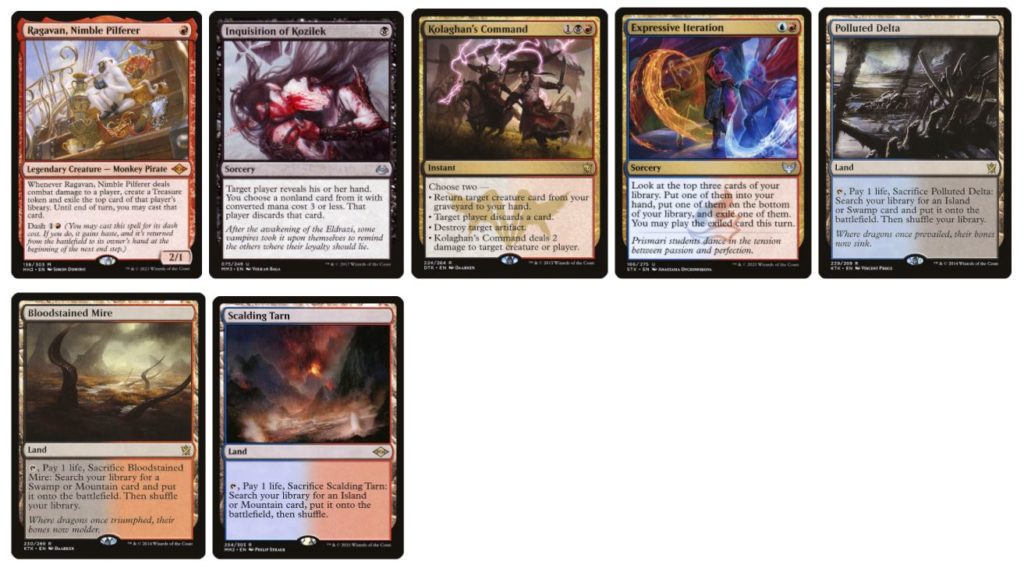
I would keep this hand, and likely lead off with Inquisition of Kozilek. Because this hand only has one creature, it’s important to protect it as best you can. If you play Ragavan on turn one and they have a Prismatic Ending, life gets hard in a hurry. Depending on what you see with the Inquisition, you can make the decision to either play the Ragavan normally, or just keep dashing it to play around Prismatic Ending and Supreme Verdict. Kolaghan’s Command gives you an answer to a Chalice of the Void, which provides you with some more freedom in what you can take with the Inquisition of Kozilek. Expressive Iteration will come in handy — you’re likely looking for more pressure heading into the mid-game, but additional disruption is also welcome.
Sideboard Guide
Hammer Time
-1 Kroxa, Titan of Death’s Hunger
The Hammer Time match-up often comes down to timing, especially when Sigarda’s Aid is in play. But Grixis Shadow certainly has all the tools to cover the problems Hammer Time can present. Engineered Explosives is a clean answer to Sigarda’s Aid and Colossus Hammer, while also pulling double duty against Construct tokens and zero-mana creatures. Rebuying Engineered Explosives every turn with Lurrus is a death sentence for Hammer players. Alpine Moon covers both Urza’s Saga and Inkmoth Nexus — whichever is more threatening at the time. Fatal Push, Spell Pierce, and Terminate are all cheap, instant-speed interaction, so you can keep your options open without having to commit a lot of mana on your own turns.
Ragavan just gets blocked too easily by the slew of zero- and one-mana creatures, so it gets to sit this one out. While this is a Death’s Shadow deck, your life total is a concern here; you want to try and stay above 11 life until you know that you can move in on the Shadow plan safely. Kroxa and Expressive Iteration are both just a bit slow, and force you to use mana on your turn, which isn’t the best place to be.
Azorius Control
Azorius Control certainly became a bit trickier since the adoption of Solitude, but nonetheless, I think this is still a reasonable-to-good match-up. The key here is understanding how much pressure you can afford to apply; you don’t want to get caught overextending into a Supreme Verdict or getting two-for-one’d with Solitude. Use your disruption to clear the way for a threat and ride it to victory. Spell Pierce and Mystical Dispute help Drown in the Loch at fighting on the stack; Engineered Explosives can destroy Chalice of the Void and Rest in Peace.
While Unholy Heat answers planeswalkers, it almost always leaves you down a card in the exchange. I prefer the plan of having extra counterspells to fight on the stack, which ends up card-neutral and swings the mana advantage in your favor. Cutting a Dress Down against a Solitude deck may seem odd, but since Solitude is their only creature, Dress Down will often sit in your hand.
Burn
The Burn match-up often favors the player with more experience. From the Death’s Shadow side, the secret to beating Burn is to be conservative with your life total until you have the game rolled up. I’ll often see players dealing themselves damage at a normal rate to get a Death’s Shadow into play to race the Burn player, which is usually a losing position. Instead, you want to force the Burn player to deal you as much damage as possible. Eventually, this will turn on your Death’s Shadows, tax their resources, and make it easier for you to race. A fast start with Ragavan and Dragon’s Rage Channeler can pressure their life total enough to force them to respond. You can also get them to move by taxing their hand with discard spells and Kroxa.
In previous builds of Grixis Death’s Shadow, I didn’t board in much cheap removal because the deck already had enough. But since this version only has four removal spells in the main deck, I like the Fatal Push out of the sideboard to help mitigate creature-heavy hands from the Burn player. Spell Pierce and Mystical Dispute are useful because games are often won and lost within small windows; countering a lethal burn spell often gives you enough time to win in a turn or two. Collective Brutality is more of a nod to the popularity of Burn, more so than how good or bad the match-up is.
Crashing Footfalls
Cascade decks are among the better match-ups for Grixis Death’s Shadow. The blend of discard spells, counterspells, and a fast clock is brutal for the Crashing Footfalls player to work through. Death’s Shadow and Kroxa outsizing Rhino tokens is an added benefit, too.
Engineered Explosives is an answer to Crashing Footfalls that won’t leave you down on cards, which allows you to negate one of the deck’s biggest strengths — card economy. Spell Pierce and Mystical Dispute are good all-purpose counterspells to either aid Drown in the Loch in countering a Crashing Footfalls or defend it from Force of Negation or Mystical Dispute.
Kolaghan’s Command doesn’t have any good targets, and the Raise Dead mode does very little against Crashing Footfalls, so it gets a spot on the bench. Dress Down only stops Fury, which isn’t a huge deal against Grixis Shadow. Unholy Heat is really only killing Rhino tokens, and our plan is to avoid letting them resolve, anyway.
Jund Saga
The Jund Saga vs. Grixis Death’s Shadow match-up is a classic midrange mirror. Extra removal spells and Soul-Guide Lanterns to shut down Lurrus are the name of the game. The easiest way to win is to have the last threat in play after both players have traded off all their resources. Kroxa, Lurrus, and Kolaghan’s Command are all excellent ways to accomplish this goal. I usually trim a couple of Thoughtseizes in match-ups like this, but Urza’s Saga makes discard spells less valuable. I cut the Thoughtseize, but left two Inquisitions as a concession to Wrenn and Six and Lurrus.
Four-Color Blink
Four-Color Blink is the new hotness, and the spiritual successor to Elementals. I’ve found two effective plans against Four-Color Blink: Shred their hand with discard spells and kill them before they can put their plan back together, or loop Dress Down with Lurrus by casting it in your own end step.
This is one of the match-ups where having three main deck copies of Dress Down is huge. Their game plan revolves around enter the battlefield effects, so Dress Down is a devastating counter. Meanwhile, Spell Pierce lets you fight against their removal suite at a low cost so you can spend the rest of your mana developing your board. Terminate is just added removal that can clear out Omnath, Locus of Creation, or kill anything you need to in response to an Ephemerate.
Kolaghan’s Command lacks good targets against Four-Color Blink, so it gets the sideboard games off. Drown in the Loch is good against part of their deck, but the evoke Elementals are hard to counter early in the game.
Whether you’re already a Grixis Shadow player, or you’re looking to pick up the deck for the first time, I hope this guide was helpful for you. Having the opportunity to help current or aspiring pilots of my favorite deck does my heart good. As always, I’m more than happy to respond to questions and comments on Twitter at @RappaciousOne! Check back next week when I’ll be going over my picks of the best Modern cards from Crimson Vow!

Michael Rapp is a Modern specialist who favors Thoughtseize decks. Magic sates his desire for competition and constant improvement.

